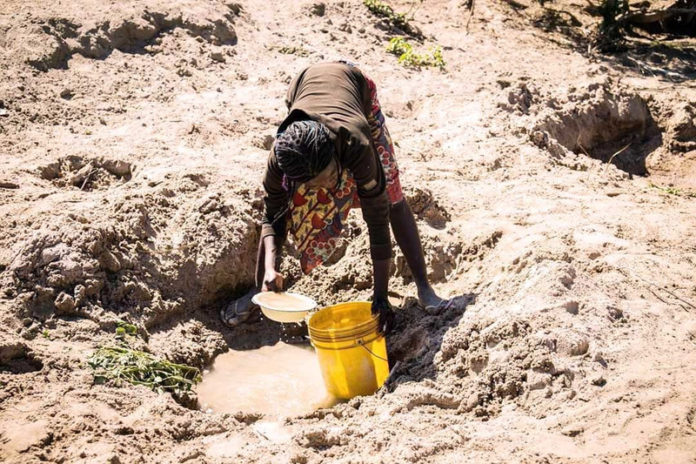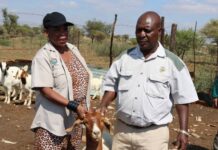
The EU’s investment package for development, the “Global Gateway”, which the EU Commission president Ursula von der Leyen described as the “future of the EU’s development cooperation”, seems fixated on boosting private sector investments in energy, infrastructure and climate-smart solutions in Africa.
According to Luisa Fondello and Lucy Esipila, it is unclear whether this investment package of the world’s largest aid donor will trickle down within African communities, reaching those needing it the most.
Fondello is an international cooperation officer at Caritas Europa while Esipila is policy and advocacy officer at Caritas Africa.
They said it was also unclear if it will be part of the problem or the solution when it comes to fighting hunger and transforming our broken food systems.
“During Caritas Africa and Caritas Europa’s recent visit to Kenya, we met Rachel Gakii Ananga in Meru, in the eastern part of the country. She had moved into dryland farming after having worked as a nurse for nine years. Tired of treating the symptoms of food insecurity and malnutrition, Rachel wanted to help solve their root causes instead,” the two said.
“She is an example of someone doing something ordinary in an extraordinary way: using self-manufactured vegetable vertical grow bags that last for 10 years and that protect stems from the wind and insects.
While most grow bags accommodate a handful of stems, Rachel is capable of planting 120 stems in each bag using only water. She produces organic vegetables and fruits that help fight malnutrition and sells them for the same price as those produced with chemical fertilisers. In her own words: “We don’t need synthetic fertilisers to boost production or medicine to stay healthy, we need good food. I sell safe food.”
There are so many women like Rachel throughout the African continent. They might not have all the answers to the effects of climate change and to the food crisis, but they certainly have solutions to offer. And yet, it is unclear if they will at some point benefit from the EU’s Global Gateway.
As the Horn of Africa faces the most severe drought in four decades, local solutions are as valuable as ever.
Marsabit County in northern Kenya has seen no rain whatsoever in two years. For many local inhabitants there is not much to do but pray, as explains the chair of the Tigo Community Committee: “We stay put. We keep counting the days to the next rainy season and pray the rain will come. It does not come, but we keep counting.”
No rain means no water, no water means no pasture to feed livestock, no livestock means no sale of milk to generate income for food, no food means malnutrition and waking up and going to sleep hungry every day.
The EU has developed its Team Europe response to global food insecurity and stepped up its contribution to the Horn of Africa Initiative. It has also proposed to use reserves in African, Caribbean and Pacific countries.
But, according to Fondello and Esipila, from the experiences of local Caritas organisations in the Horn of Africa, there are three things fundamentally wrong with the EU’s efforts.
“First, the humanitarian assistance provided is not at all enough. Donors should allocate humanitarian assistance worldwide solely on the basis of need. Despite the unprecedented emergency in the region, only around 20% of appeals to the Horn of Africa have been met. Second, much more attention is needed to the reality of agriculture in Africa and to local solutions.
“The EU’s Global Gateway concentrates on mobilising private sector funding and partnering with big agribusiness companies. But will new funding come through? Will it benefit rural areas, where half of the African population lives?
“Will it support smallholder farmers, who represent up to 80 percent of the population of most African countries and supply most of the food consumed but largely operate in informal settings?”
They added the Global Gateway can go far only if pledges are fulfilled. It can go far only if it upscales political support and financing to agro-ecological approaches like Rachel’s and to smallholder farmers, boosting domestic food production.
“Third, to get this right, the EU needs to get to the bottom of the food crisis. Von der Leyen’s call to step up efforts on food production does not seem to acknowledge that hunger is not a production problem. 50 percent of the people affected by hunger are small agricultural producers.”
The current food crisis is a crisis of access. Hunger is a justice issue — one that farmers like Rachel demand to be addressed at the highest level.
To do so, the EU’s efforts must be part of a strategy to transform our broken food systems. They must address the structural reasons behind hunger, such as unfair trade practices or greenhouse gas emissions aggravating the drought in the Horn of Africa. If it keeps giving with one hand and taking away with the other, the EU will not help break the endless cycle of food insecurity on its “sister continent”.
During our recent visit to Caritas Marsabit’s projects in northern Kenya, a member of the Tigo community told us: “my neighbour has not lit a fire in two days. She has no food to cook. For pastoralists, no fire on the stove is not only a sign of lack of food, but also a sign of lack of hope.”
The EU’s Global Gateway should offer hope. Hope to pastoralists and small agricultural producers like Rachel, who are part of real solutions.








